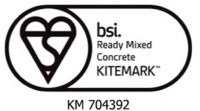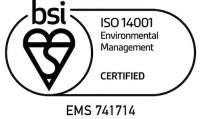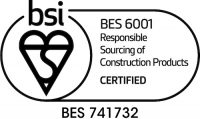The fundamental difference between concrete and screed is that concrete is much better suited to applications which require strength, while screed is used primarily for smooth top-level finishes to create subfloors. In this sense, concrete and screed don’t compete, rather, they complement each other.
The difference in detail
Concrete: a material designed for high-strength applications in construction and engineering, concrete is very durable. It’s used primarily to create walls and floors, but can be used to create all manner of different structures. It’s created by mixing and bonding cement, water and coarse aggregates.
Screed: screed is created by mixing and bonding cement, water and finer aggregates like sand, making for smoother and more precise finishes. This makes screed perfect for subflooring in homes, or industrial flooring.
Composition
As previously stated, screed and concrete are, compositionally, very similar. That is, they’re both created with cement, water and aggregates. The key difference between the two is the type of aggregates used; for concrete: coarse aggregates – for screed: fine aggregates.
In certain cases, though, the types of aggregates used in creating concrete and screed can be altered in order to suit different applications.
Appearance
As concrete mixes use coarse aggregates, this tends to produce a more rugged look. Screed, on the other hand, looks a lot smoother due to the fine aggregates used in its creation.
However, this difference in appearance is much more obvious when both materials are in their agitated state. Once set, both materials can be treated in such a way that they look very similar.
Strength
Functionally, this is where concrete and screed differ the most.
Thanks to the coarse aggregates used in its creation, concrete boasts much higher levels of strength, making it much better suited to applications such as foundations and walls. This is because aggregates make up a large portion of the concrete mix,
Screed, on the other hand, is created with smoothness in mind, not strength, meaning it’s much better suited to bump-free surfacing. However, more than just improving on concrete aesthetically, it can also lengthen its life: the compact mix forms a durable top layer which can protect it from constant footfall.
Thickness
Given that screed is only used as a top layer, it can be laid very thinly, probably around 50mm. Concrete, however, needs to withstand heavy loads, so it will usually have a thickness of over 100mm.
If you want to repair, replace or install a new concrete structure in your home or commercial property in London, Surrey or the South East, we can help you identify the right type of concrete and screed for your individual requirements. EasyMix Concrete are experts in the creation and supply of the finest quality concrete and screed mixes, so if you’d like to know more about the services we provide, please feel free to get in touch with us today. We’ll be more than happy to help you with anything you need.



